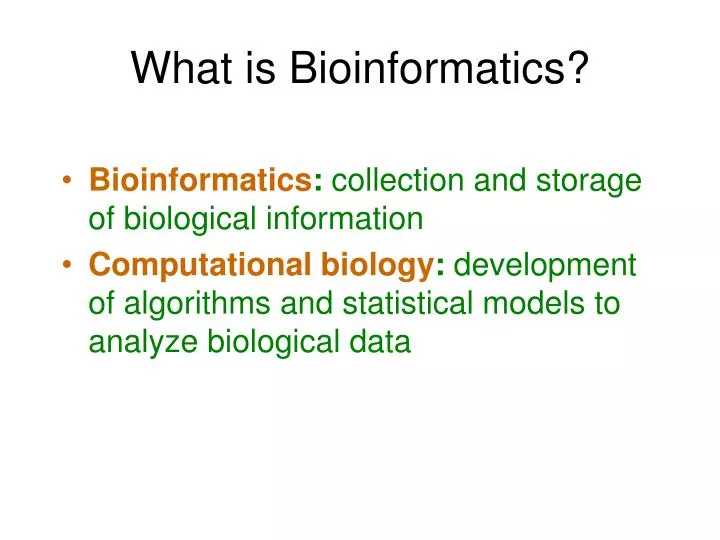The Ultimate Guide To Bioinformatics Tutor
Table of ContentsThe Best Strategy To Use For Bioinformatics TutorTop Guidelines Of Bioinformatics TutorSome Known Factual Statements About Bioinformatics Tutor The Best Strategy To Use For Bioinformatics TutorThe Only Guide for Bioinformatics Tutor
Of the total participants entailed in the training, 80% were pupils from public greater education and learning establishments, while the staying 20% originated from exclusive organizations. To receive a certificate of participation, pupils were called for to go to at least 90% of the total training hours. As an outcome of this demand, an excellent 95% of the participants successfully gotten their certifications, having not only met the minimum presence criteria yet additionally completed all assigned activities throughout the training.
Throughout the height of the COVID-19 pandemic, specifically in between June and August 2020, the job team was entrusted with organizing specialized training in bioinformatics. This training was specifically aimed at pupils from the research study team Nucleus for Study in Applied Computing at the Federal College of Pará (UFRA) The adaptation to remote learning systems as a result of the pandemic created a chance to discover brand-new mentor methodologies and digital tools that improved both reach and performance.
This course was made to supply an available yet extensive overview of Artificial Knowledge methods, particularly as used in bioinformatics (Bioinformatics Tutor). This online format allowed participation from pupils throughout Brazil, numerous of whom might not have had the possibility to participate in in-person sessions.
How Bioinformatics Tutor can Save You Time, Stress, and Money.
A noteworthy attribute of this program was its focus on hands-on learning. Around 50% of the total training hours were devoted to practical tasks where trainees developed smart versions and applications in a series of clinical domain names, including genetics, molecular biology, and ecological data analysis. Widely used structures and devices such as Spyder, Google Colab, Jupyter Notebooks, and Orange were integrated right into the coursework. These platforms allowed pupils to take part in real-time data adjustment, model training, and formula experimentation.
The program drew in 80 participants in overall. Sixty of them were associated with various greater education organizations in the state of Pará, while the remaining twenty came from establishments situated in five various other Brazilian states. This broad geographical depiction highlighted the national rate of interest in bioinformatics and the growing demand for specialized abilities in this location. By introducing Expert system in a functional and appropriate context, the initiative offered to link the space in between theory and real-world application, providing pupils with a strong structure for future study or employment in the field.
The training initiative created part of a more comprehensive academic outreach initiative referred to as the Bioinformatics when traveling job. This project has, for many years, introduced loads of trainees to the world of bioinformatics and computational biology. The occasions held under this umbrella campaign have taken area across numerous regions and years, as summarized in Table 1 (Checklist of events, places, years, and complete numbers of students and trainers)
Numerous of these teams, initially brought with each other by their participation in training events, have actually given that gone on to generate independent clinical study in cooperation with regional scholastic organizations. The training not only promoted scientific thinking within the context of bioinformatics yet also stimulated collaborative relationships that extended beyond the training environment.
The Only Guide to Bioinformatics Tutor
The task itself was conceived and organized by megabytes and RR, that managed the planning and implementation of each step. Lectures were delivered by a multidisciplinary group containing MB, FA, EF, KP, JS, DM, SN, LP, LG, RR, ih, and a/c. The same group, excluding IH and RR, likewise acted as tutors for the sensible training modules. Funding for the project was supplied with the grant 88887.200562/ 2018-00 from CAPES. The authors expand their thankfulness to everyone that added to the understanding of this project, whether straight or indirectly, because its beginning.
The Federal University of Pará's Workplace of Research (PROPESP/UFPA) likewise supplied financial backing, especially for the manufacturing of the final manuscript. The writers declare no business or economic conflicts of interest that could have affected the study. Additionally, all point of views and interpretations shared in this article are entirely those of the writers and do not visit this web-site always mirror those of their respective organizations, the author, editors, or reviewers associated with the magazine procedure.

The Only Guide for Bioinformatics Tutor
From a pedagogical perspective, the teaching approach made use of in the training was purposefully interactive. Courses were performed in a fashion that encouraged trainee involvement and conversation, exceeding rote memorization to explore how ideas are created, applied in life, and examined in academic setups. The educational philosophy concentrated on nurturing both strong and struggling students, supplying personalized assistance, and structure self-confidence via continual mentorship and perseverance.

Each team, containing roughly 36 individuals, was sustained by three coaches-- this website a lot of whom were postdoctoral researchers with specialized proficiency. These advisors not only aided design the team jobs but also facilitated their execution, making certain that each study inquiry was both suitably difficult and relevant. The objective was to supply a biologically practical context that individuals can check out through flexible objectives and accessibility to curated datasets.
For added understandings into the technique and results of this project-based learning strategy, visitors are routed to S1 Text, that includes detailed descriptions of the instructional framework, evaluation methods, and project styles used in the training sessions.
8 Easy Facts About Bioinformatics Tutor Explained
Of the total amount individuals involved in the training, 80% were trainees from public greater education and learning institutions, while the staying 20% came from exclusive establishments. To qualify for a certificate of involvement, pupils were needed to attend at the very least 90% of the overall training hours. Significantly, past the pupils that registered in the training sessions, 7 seasoned teachers took part in providing the training courses, while 3 specialized research professors collaborated the informative post general training procedure. Roughly 50% of the overall training hours were devoted to functional tasks where students developed intelligent models and applications in a range of scientific domains, including genetics, molecular biology, and environmental information evaluation. The training not just cultivated clinical reasoning within the context of bioinformatics yet additionally stimulated collective relationships that extended past the training setting.
 Alana "Honey Boo Boo" Thompson Then & Now!
Alana "Honey Boo Boo" Thompson Then & Now! Lark Voorhies Then & Now!
Lark Voorhies Then & Now! Val Kilmer Then & Now!
Val Kilmer Then & Now! Mason Reese Then & Now!
Mason Reese Then & Now! Barbara Eden Then & Now!
Barbara Eden Then & Now!